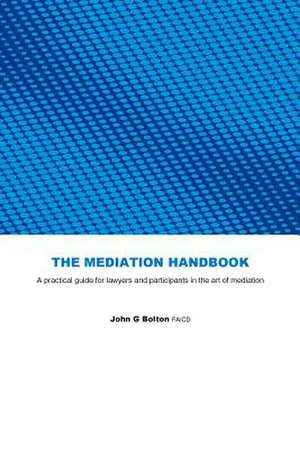The Mediation Handbook
Autor John G. Bolton Faicden Limba Engleză Paperback
Preț: 102.67 lei
Nou
Puncte Express: 154
Preț estimativ în valută:
19.65€ • 20.46$ • 16.61£
19.65€ • 20.46$ • 16.61£
Carte disponibilă
Livrare economică 15 februarie-01 martie
Preluare comenzi: 021 569.72.76
Specificații
ISBN-13: 9781482750737
ISBN-10: 1482750732
Pagini: 74
Dimensiuni: 152 x 229 x 5 mm
Greutate: 0.11 kg
Editura: CreateSpace Independent Publishing Platform
ISBN-10: 1482750732
Pagini: 74
Dimensiuni: 152 x 229 x 5 mm
Greutate: 0.11 kg
Editura: CreateSpace Independent Publishing Platform
